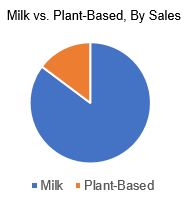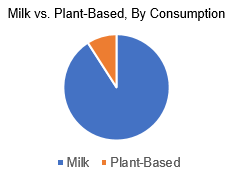The National Milk Producers Federation said it was pleased that the Dietary Guidelines Advisory Committee’s final report reaffirms dairy’s crucial role in a nutritious diet but expressed concern that the committee failed to recognize newer, broader science that shows the benefits of dairy foods at all fat levels.
“The Dietary Guidelines Advisory Committee today restated what consumers already know – that regular dairy consumption offers essential nutrition that nourishes people throughout their lives,” said Jim Mulhern, president and CEO of NMPF, the largest organization of U.S. dairy farmers and the cooperatives they own. “Across different types of diets and throughout all stages of life, dairy products provide the nutrients people need to be healthy.”
But Mulhern said it was disappointing that the committee largely reflected long-held assumptions on saturated fat, despite numerous studies that have called traditional anti-fat guidance into question.
“We repeatedly called on the committee to take a fresh look at multiple studies that show beneficial or neutral effects of dairy on chronic disease risk at all fat levels,” Mulhern said. “Unfortunately, the DGAC report does not reflect this newer science.”
The DGAC’s final scientific advisory report, submitted to the secretaries of Agriculture and Health and Human Services and released today, notes that Americans overall need more dairy in their diets, with 88 percent of them falling short of recommendations. That figure includes 79 percent of 9-13-year-olds, who rely heavily on the school-lunch program to meet nutritional needs. The report also highlights dairy’s unique place as a provider of key nutrients that otherwise would be under-consumed in American diets.
- Dairy is recommended for consumption within all three healthy eating patterns featured in the report, with three servings per day recommended in the Healthy U.S. style eating pattern and Healthy Vegetarian Style patterns and two servings per day in the Healthy-Mediterranean pattern;
- The committee recognized milk as a nutrient-rich beverage that contributes positively to under-consumed nutrients, including potassium, calcium, phosphorus, magnesium, vitamins A and D, and others;
- Low-fat and nonfat dairy foods are recommended as nutrient-dense building blocks of a healthy diet; and
- In the committee’s first-ever recommendations for birth through 24 months, yogurt and cheese are recognized as complementary feeding options for infants ages 6-12 months, and dairy foods (milk, cheese and yogurt) are included in healthy eating patterns for toddlers 12-24 months.







